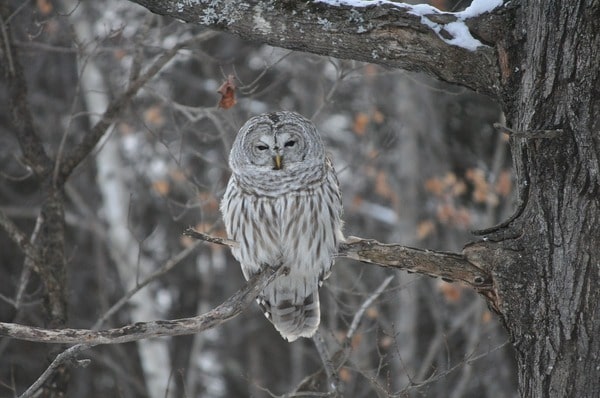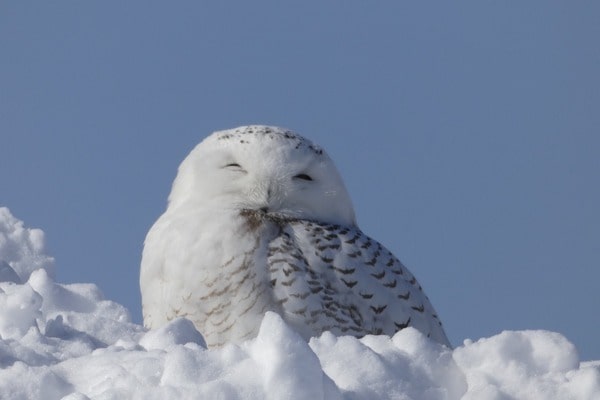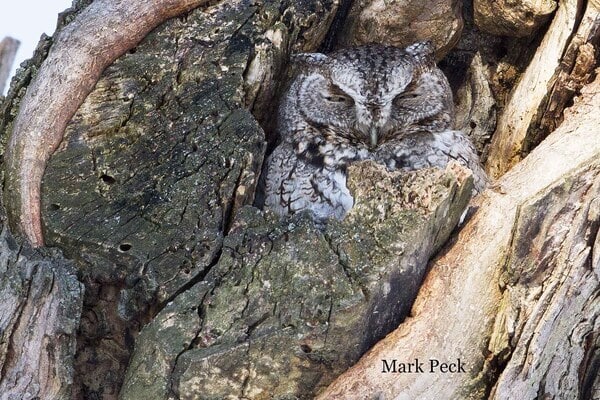Owls are a unique bird species which do not require hibernation. They’ve evolved and can survive in harsh winter weather because of their warm feathers, blood flow system that is located in their feet, and the sharp hearing. Owls of certain species wander around during winter months to hunt for more prey. This is called Irruption. While this behaviour is similar to migration , it’s not exactly similar to it.
Owls do not hibernate. They remain active throughout the year, including winter. Unlike some animals that hibernate to conserve energy when food is scarce, owls have adapted to survive in cold conditions. Their dense, insulating feathers provide excellent protection against low temperatures, allowing them to maintain their body temperature .
Their bodies are specially adapted to endure extreme temperatures, which makes it much easier to deal with the cold , and even find prey in the snow.
Hibernation is a method of survival that is employed when there isn’t enough food available to sustain the animal through the colder seasons or when winter months are too cold. Owls, however, have incredible thermally-efficient feathers, and are able to catch rodents even in pitch-black conditions even in the coldest weather They just go through.
Reason Owl can Migrate:
The challenge of finding food may force the owls to relocate to other places. But, they’d be happy visiting areas that offer easy catch, rather than an arduous hunt.
The full season of breeding for the owls also signifies their Irruptions. Sometimes, there’s a lot of prey available, however the owls’ movement towards the south continue to be seen. The reason is that owls require special diets during breeding season and being able to survive on available prey may not be enough since they are dependent on a broad range of prey during winter.
Food is an important element which influences the pattern of migration of Owls. But, owls won’t always decide to migrate only when there’s a decrease in lemming or rodent populations, or an apparent shortage of food.
Can Owls Survive the Winter?
- Owls, as with all birds, develop an additional layer of down feathers in colder weather to ensure they stay warm. These feathers are situated beneath their primary layer of feathers , and they help keep warm air in close proximity to the body. They also hold warm air and warm air, but when an owl is frightened and then fluffs the feathers then the air could become even more warm. This helps keep the Owl’s core temperature at a high level.


- Although we’re unable to detect the ears (because they’re hidden behind feathers) Owls can be seen with ears. The most fascinating thing about the ear of an owl is they’re not aligned as ours are. Their ears are off center, with one ear more prominent than another. Also, they have facial disks that assist in ensuring to direct sound into their ear canals. The disks as well as the off-center alignment permit them to have a remarkable hearing that allows them to live throughout winter. Because of this hearing, owls can detect prey that is buried in snow in order to keep warm. It is much easier to fly over and capture any animal which are hidden from view.
- Owls are among the rare species of animals that don’t have pain receptors on their feet. The absence of receptors and fluids blocks the outside temperature from impacting the body. This means that the feet of their feet remain very cold, however it doesn’t affect the internal temperature of their bodies, and they’re able to avoid the effects of frostbite.
Related Post
- Owl Beak : A to Z Guide
- Do Hawks Eat Owls – Explanation
- Do Owls Eat Chickens – Explanation
- Are owls Omnivores
- Do Owls Eat Squirrels
Resources
- https://www.birdwatchingusa.org/
- https://opticsmag.com

